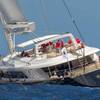Stakeholders Discuss Use of HFO in the Arctic
The U.S. Coast Guard (USCG) held a public listening session in Washington D.C. on September 27, 2016 to address ships’ use of heavy fuel oil (HFO) in the Arctic, examining its risks and as well as potential mitigation strategies which can be taken to the International Maritime Organization (IMO).
The event was held in the Department of Transportation building, where Paul “Chip” Jaenichen, Sr., Maritime Administrator for the U.S. Maritime Administration (MARAD), welcomed participants.
The listening session was led by Jeff Lantz, director of Commercial Regulations and Standards at USCG headquarters, and head of U.S. Delegation to the IMO’s Maritime Safety Committee and Marine Environment Protection Committee.
Other participating stakeholders included representatives from the State of Alaska, Native Alaskan Tribal organizations, city Mayors from northern Alaska, the maritime industry, environmental nongovernmental groups (NGOs), representatives from the Committee on the Marine Transportation System (CMTS) and multiple Federal agencies including the USCG, MARAD, National Oceanic and Atmospheric Administration (NOAA) and Department of State.
As the lead agency representing the U.S. at the IMO, the Coast Guard has been leading an interagency group examining the risks of HFO use in the Arctic with a goal of developing sustainable mitigation strategies which can be taken to the IMO. This work has included multiple work sessions among the Federal interagency, discussions at Arctic Council’s Protection of the Arctic Marine Environment (PAME), and at the IMO.
The goals of the listening session were to exchange information relating to:
- Environmental risks to Arctic waters posed by HFO use by ships;
- Potential measures that could be taken to reduce those risks to Arctic waters; and
- The development, sustainment and economics of communities that would be directly affected by such measures, particularly remote indigenous populations and business interests vital to remote population centers.
Several short presentations were given and then a robust discussion ensued. Topics covered ranged from the risks of an HFO spill and its potential effects on Arctic ecosystems, actual amounts of HFO being used as fuel by ships in the Arctic, the potential effect of vessel traffic on subsistence hunting and food security, potential mitigations measures that could be applied to reduce risks posed by HFO, and the effects that a potential ban of HFO in the Arctic might have on remote communities’ ability to affordably receive essential goods.
“This was a very successful and informative discussion with broad representation.” Lantz said. “Our goal through this work is to identify the issues and possible options to address the effects of use and carriage for use of HFO by ships in the Arctic with the intention of bringing them forward for consideration and discussion at a future session of the Marine Environmental Protection Committee at IMO.”






